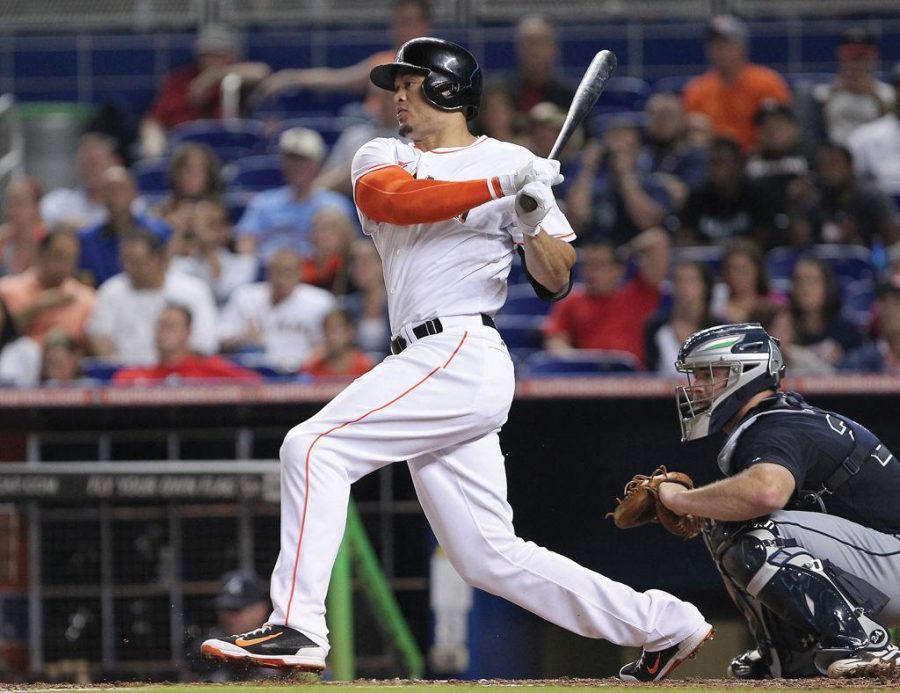Stanton contract ultimate high risk, high reward move
November 19, 2014
What would you do if you knew you were going to make $325 million over the next 10 years?
Miami Marlins outfielder Giancarlo Stanton signed a deal with the above parameters, ensuring a comfortable future for himself and his family. He probably has the talent, and he definitely has the power but will Stanton earn his money? That is, will he be worth the $325 million the Marlins plan shell out to him over the next decade? As a fan of the game, I hope the answer to that question is yes, but there’s a long line of big-money players that beg to differ.
The first of these is Alex Rodriguez, at whom the free-spending Yankees threw $275 million in 2008. It’s a true horror story of a contract: A-Rod was once one of the best players in the majors and has earned himself not one, but two contracts of more than $250 million in his career. But things went sour in 2011, when Rodriguez was the highest-paid player in the MLB, earning more than $30 million to play in just 99 of 162 games.
In 2012, Rodriguez had one of the worst statistical seasons of his career and missed some time because of injury. The 2013 season was miserable as well; A-Rod played in just 44 games, with seven home runs and just 19 RBI. He made $28 million and $27 million in those seasons, respectively.
The nightmare concluded with a full-year suspension in 2014, though Rodriguez claims he still has a few years left in his 39-year-old body, and he will attempt to return to the Yankees for spring training.
The A-Rod example is relevant to Stanton because it proves that huge-money deals can flop. Statistically, Stanton is nowhere near the player that A-Rod was in his prime. He hasn’t batted more than .300 or hit 40 home runs in a single season yet. He came close in 2014, when he hit .288 with 37 homers, and he’s only 25, so there’s time. But it comes back to the question of whether or not Stanton will be worth his price tag. Sure, 450-foot home runs are fun to watch, but $325 million is very expensive fun.
On the other side of the argument, however, sits Miguel Cabrera. Arguably one of the best hitters in recent MLB history, and perhaps the best pure hitter playing the game today, Cabrera is making big money to hit the ball. The Detroit Tigers know not to expect a ton from him on defense — he’s slow, and his arm is iffy at best — but he can hit. Whether it’s for power or average, if it’s inside, outside or all over the place, Cabrera can consistently hit the ball.
Maybe this is the type of hitter the Marlins foresee in Stanton, and perhaps that’s their reasoning for making him the highest-paid player in the league. If Stanton can become a good enough hitter to even be compared to Cabrera, the Marlins might become moderately satisfied with their decision.
The good news for the organization is that Stanton’s deal is backloaded, meaning he won’t start getting the bulk of his money for a few years. Should his production drop, he’ll likely become a trade chip, albeit a very expensive chip that will be tough to move.
This is why people should follow suit with the Pirates: give your star his money, but don’t bog him down for years into the future. Andrew McCutchen’s six-year deal is already proving to be valuable, whereas there’s a slim chance Stanton’s will ever be worth it.








